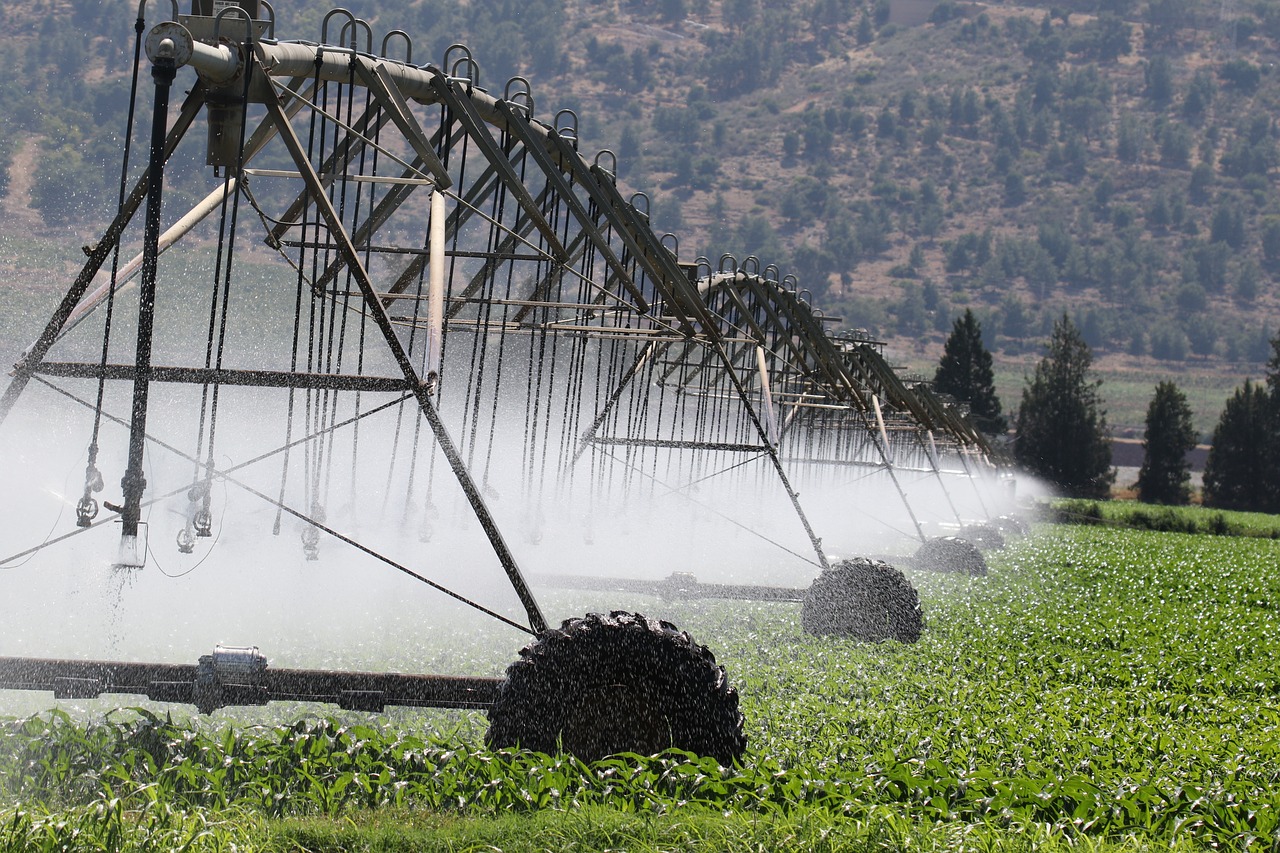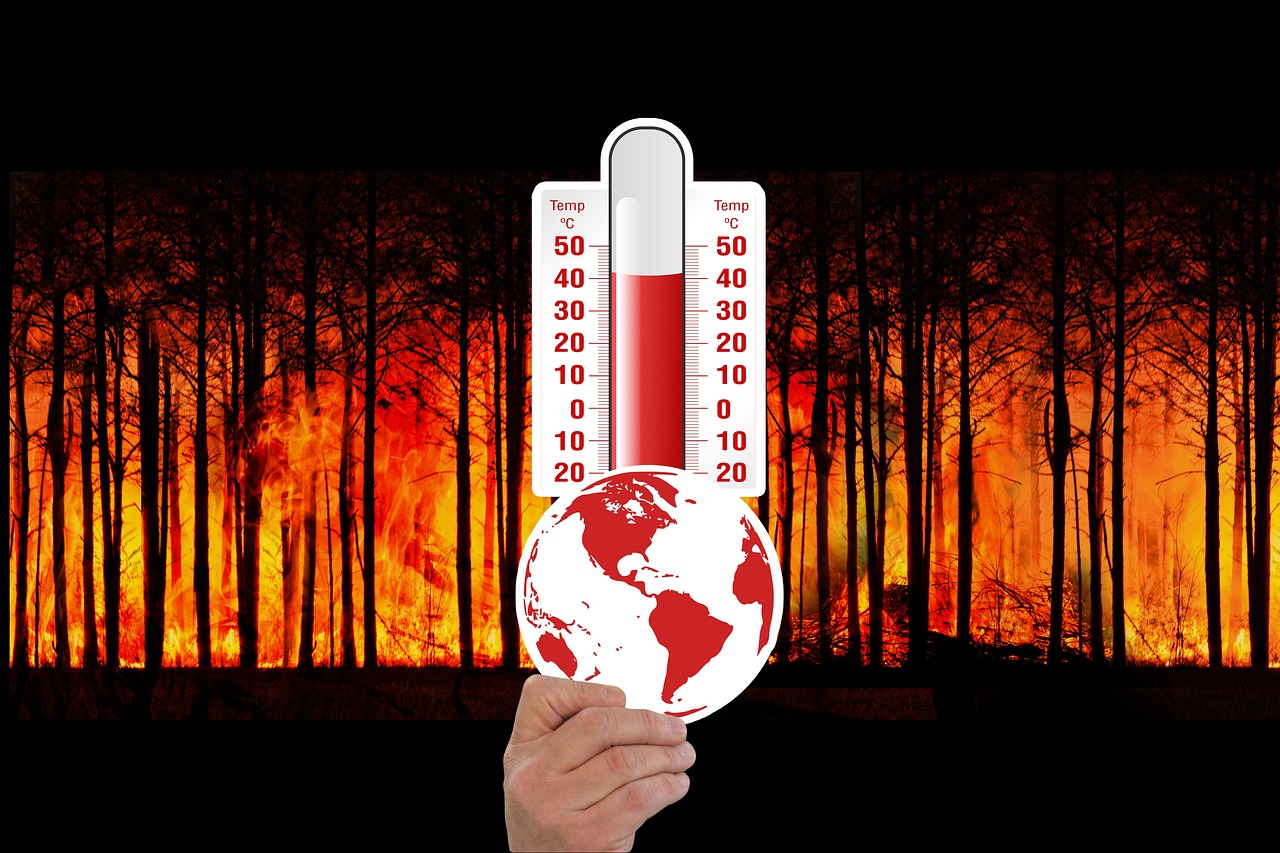Climate Change and Infectious Diseases: A Growing Threat?
In today's world, the phrase "climate change" is almost ubiquitous, filling our news feeds and conversations. But what does it really mean for our health? The intricate relationship between climate change and infectious diseases is becoming increasingly evident, and it’s a topic that demands our attention. Imagine a world where rising temperatures and shifting weather patterns not only affect our environment but also open the floodgates for diseases that were once contained. This article delves into how climate change can lead to the emergence and re-emergence of infectious diseases, posing a growing threat to public health and the environment.
As we explore this connection, it’s crucial to understand that climate change is not a distant threat; it’s happening right now. From the melting ice caps to the increasing frequency of extreme weather events, the impacts are far-reaching. In this context, infectious diseases are not just an issue for the medical community; they’re a concern for everyone. The emergence of diseases such as Zika virus, Lyme disease, and even the resurgence of malaria can be traced back to the changes in our climate. The question is, how do these changes facilitate the spread of such diseases?
Throughout this article, we will unravel the scientific principles behind climate change, examine its impact on disease transmission, and discuss the public health implications of these emerging threats. By the end, you’ll have a clearer understanding of how our changing planet is intricately linked to the health of our communities. So, buckle up as we navigate through the complex interplay between climate change and infectious diseases!
Understanding the fundamentals of climate change is crucial to grasp its impact on infectious diseases. Climate change refers to significant changes in global temperatures and weather patterns over time. While climate change is a natural phenomenon, human activities—particularly the burning of fossil fuels—have accelerated this process, leading to a rapid increase in greenhouse gas emissions. These emissions trap heat in the atmosphere, resulting in global warming.
As the Earth’s temperature rises, we witness a cascade of effects on our ecosystems, including altered precipitation patterns, rising sea levels, and shifting habitats. These changes create new opportunities for pathogens to thrive and spread. For instance, warmer temperatures can expand the geographic range of disease-carrying vectors, such as mosquitoes and ticks, making it easier for them to transmit diseases to humans. In essence, climate change is reshaping the landscape of infectious diseases, making it imperative that we understand this relationship.
Climate change alters ecosystems and human behavior, which can lead to increased transmission of infectious diseases. The relationship between climate factors—such as temperature and rainfall—and the spread of pathogens is complex and multifaceted. For example, higher temperatures can shorten the incubation period of pathogens, allowing them to multiply and spread more rapidly. Additionally, changes in rainfall patterns can create environments that are conducive to the breeding of vectors, further exacerbating the situation.
Vector-borne diseases, such as malaria and dengue, are particularly sensitive to climate variations. The habitats and populations of disease-carrying vectors are heavily influenced by climatic conditions. For instance, warmer temperatures can lead to increased mosquito populations, which in turn can result in a higher incidence of diseases like malaria and dengue fever. This section will examine how changing climates affect these vectors and their potential to spread diseases.
Temperature fluctuations can directly influence the lifecycle and behavior of vectors. As temperatures rise, the reproductive rates of mosquitoes can increase, leading to larger populations. This means more mosquitoes are available to transmit diseases, creating a vicious cycle of infection. Furthermore, certain species of mosquitoes thrive in warmer climates, which allows them to expand their range into previously inhospitable areas.
Changes in rainfall patterns can create favorable conditions for vectors. Increased rainfall can lead to standing water, which serves as ideal breeding grounds for mosquitoes. Conversely, droughts can also contribute to outbreaks by forcing animals and humans to congregate around dwindling water sources, increasing the likelihood of disease transmission. Understanding these dynamics is crucial for predicting and managing outbreaks of vector-borne diseases.
Shifts in climate also impact water quality and availability, leading to increased risks of waterborne diseases. Flooding can overwhelm sanitation systems, contaminating drinking water supplies and leading to outbreaks of diseases like cholera. Droughts, on the other hand, can lead to water scarcity, forcing people to rely on unsafe water sources. This section will discuss how extreme weather events contribute to the spread of waterborne diseases and the implications for public health.
The intersection of climate change and infectious diseases poses significant challenges for public health systems. As diseases emerge and re-emerge, healthcare infrastructure must adapt to new realities. The burden on healthcare systems can be overwhelming, especially in regions already struggling with limited resources. The potential consequences include increased healthcare costs, higher morbidity and mortality rates, and strained public health initiatives.
Effective preparedness and response strategies are essential to mitigate the impact of climate-related infectious diseases. Public health agencies must develop robust surveillance systems to monitor disease trends and identify outbreaks early. Additionally, community education and engagement are vital in promoting preventive measures. This subsection outlines best practices for public health agencies to adapt to these emerging threats.
Addressing the complexities of climate change and infectious diseases requires global cooperation. International initiatives aimed at combating these intertwined challenges are crucial for ensuring a coordinated response. By sharing knowledge, resources, and strategies, countries can work together to mitigate the impacts of climate change on public health.
- How does climate change affect the spread of infectious diseases?
Climate change alters environmental conditions, creating favorable habitats for vectors and pathogens, thus increasing the likelihood of disease transmission. - What are vector-borne diseases?
Vector-borne diseases are illnesses transmitted through vectors such as mosquitoes and ticks, including malaria, dengue, and Lyme disease. - Can climate change lead to new diseases?
Yes, climate change can introduce pathogens to new regions, potentially leading to the emergence of new infectious diseases.

The Science of Climate Change
This article explores the intricate relationship between climate change and the emergence of infectious diseases, highlighting the implications for public health and the environment in a rapidly changing world.
Understanding the fundamentals of climate change is crucial to grasp its impact on infectious diseases. At its core, climate change refers to significant alterations in global temperatures and weather patterns over time. While climate change is a natural phenomenon, human activities, particularly the burning of fossil fuels, deforestation, and industrial processes, have accelerated these changes at an alarming rate. The Intergovernmental Panel on Climate Change (IPCC) has reported that the Earth's average surface temperature has risen by approximately 1.1 degrees Celsius since the late 19th century, predominantly due to increased carbon dioxide and other greenhouse gas emissions.
This increase in temperature has far-reaching effects on the environment and ecosystems. For instance, warmer temperatures can lead to the melting of polar ice caps and glaciers, resulting in rising sea levels. Additionally, shifts in temperature and precipitation patterns can disrupt local climates, leading to extreme weather events such as hurricanes, droughts, and floods. These environmental changes not only threaten biodiversity but also create an ideal breeding ground for infectious diseases to thrive. The link between climate change and health is becoming increasingly evident, as changing climates affect the distribution of pathogens and their vectors.
One of the most significant aspects of climate change is its ability to alter ecosystems and human behavior, which in turn influences the transmission of infectious diseases. For example, warmer temperatures can expand the geographic range of disease-carrying organisms, such as mosquitoes and ticks, allowing them to inhabit areas previously unsuitable for their survival. As these vectors move into new territories, they bring along the pathogens they carry, increasing the risk of outbreaks in populations that may lack immunity to these diseases.
Moreover, climate change can exacerbate existing health disparities. Vulnerable populations, particularly in low-income regions, often have limited access to healthcare and are more susceptible to the impacts of climate change. These communities may face increased exposure to vector-borne diseases due to inadequate housing, poor sanitation, and lack of resources to combat outbreaks effectively. As the climate continues to change, understanding its scientific underpinnings becomes essential for developing effective public health strategies.
| Factor | Description |
|---|---|
| Greenhouse Gas Emissions | Release of gases like CO2 and methane from human activities that trap heat in the atmosphere. |
| Deforestation | Clearing forests reduces the planet's capacity to absorb CO2, increasing atmospheric concentrations. |
| Industrialization | Manufacturing processes often emit large amounts of greenhouse gases, contributing to global warming. |
| Agricultural Practices | Certain farming methods release nitrous oxide and methane, potent greenhouse gases. |
In conclusion, comprehending the science behind climate change is vital for recognizing its multifaceted impacts on infectious diseases. As we continue to witness the effects of climate change unfold, it is imperative to acknowledge the interconnectedness of our actions and the health of our planet. By addressing the root causes of climate change, we can better prepare for the challenges it poses to public health and work towards a healthier future for all.
- What is climate change? Climate change refers to long-term alterations in temperature and weather patterns, primarily driven by human activities.
- How does climate change affect infectious diseases? It alters ecosystems and human behaviors, increasing the range and transmission of pathogens and vectors.
- What can be done to mitigate these effects? Strategies include reducing greenhouse gas emissions, improving public health infrastructure, and promoting global cooperation.

Impact on Disease Transmission
Climate change is not just a distant threat; it's a reality that reshapes our environment and, in turn, alters the dynamics of infectious disease transmission. As temperatures rise and weather patterns shift, we witness a profound impact on how diseases spread among populations. But how exactly does this transformation occur? Let’s dive into the details.
First and foremost, the interplay between climate and disease transmission is primarily driven by changes in temperature and precipitation. These two factors can significantly modify the habitats of various pathogens and their vectors—organisms that carry and transmit diseases to humans. For instance, warmer temperatures can expand the geographical range of certain vectors, such as mosquitoes, allowing them to thrive in previously inhospitable areas. This expansion not only increases the risk of diseases like malaria and dengue fever but also poses new challenges for public health systems.
Moreover, changes in rainfall patterns can lead to both flooding and droughts, creating a perfect storm for disease transmission. Flooding can create stagnant water, which becomes a breeding ground for mosquitoes. Conversely, droughts can lead to reduced water quality, concentrating pathogens in smaller water sources. The result? A surge in waterborne diseases, as pathogens find their way into drinking supplies, making people sick. The relationship between climate and disease transmission is, therefore, a complex web of interactions that can lead to unexpected outbreaks and public health crises.
To illustrate these points, consider the following table that summarizes the effects of climate change on different types of infectious diseases:
| Type of Disease | Impact of Climate Change | Examples |
|---|---|---|
| Vector-Borne Diseases | Increased range and population of vectors due to warmer temperatures | Malaria, Dengue Fever |
| Waterborne Diseases | Contaminated water sources from flooding and drought | Cholera, Typhoid Fever |
| Respiratory Diseases | Increased air pollution and allergens due to climate change | Asthma, Allergies |
In summary, the implications of climate change on disease transmission are profound and multifaceted. As our planet continues to warm, we must remain vigilant and proactive in understanding how these changes affect our health. The need for adaptable public health strategies has never been more urgent, as we face not only the immediate challenges of infectious diseases but also the long-term consequences of a changing climate.
- How does climate change affect the spread of infectious diseases? Climate change alters habitats and behaviors of disease vectors, leading to increased transmission rates of various infectious diseases.
- What are vector-borne diseases? These are illnesses transmitted through vectors, such as mosquitoes and ticks, which are influenced by climate conditions.
- Can public health systems adapt to these changes? Yes, effective preparedness and response strategies can help mitigate the impact of climate-related infectious diseases.

Vector-Borne Diseases
Vector-borne diseases are a significant concern in the context of climate change, as they rely on living organisms—often insects like mosquitoes and ticks—to spread pathogens to humans. These diseases, such as malaria, dengue fever, and West Nile virus, are particularly sensitive to changes in temperature and precipitation. As our planet's climate continues to shift, the habitats and populations of these vectors are also changing, leading to potential increases in disease transmission. Imagine a world where the warm, humid conditions that mosquitoes thrive in expand to new regions—this is not just a possibility but a growing reality.
One of the most alarming aspects of this shift is how climate change can extend the geographical range of these vectors. As temperatures rise, regions that were once too cold for certain species may become more hospitable. For example, the Aedes aegypti mosquito, known for spreading dengue and Zika viruses, has already been reported in areas previously considered too cool for its survival. This expansion means that more people could be exposed to diseases that were once confined to tropical or subtropical regions.
Additionally, the lifecycle of these vectors is intricately tied to environmental factors. For instance, warmer temperatures can accelerate the development of mosquito larvae, leading to larger populations more quickly. According to research, a mere increase of 1°C can enhance the reproductive rate of some mosquitoes by up to 25%. This rapid population growth directly correlates with an increased risk of disease outbreaks, as more vectors mean more opportunities for pathogens to spread.
Moreover, rainfall patterns play a crucial role in the proliferation of vector populations. Heavy rainfall can create standing water, which serves as ideal breeding grounds for mosquitoes. Conversely, droughts can lead to water shortages, pushing vectors to seek out new habitats, potentially bringing them into closer contact with human populations. The relationship between rainfall and vector habitats can be summarized in the following table:
| Rainfall Condition | Impact on Vectors | Examples of Diseases |
|---|---|---|
| Increased Rainfall | Creates standing water for breeding | Dengue, Malaria |
| Decreased Rainfall | Vectors seek new habitats | Lyme Disease, West Nile Virus |
In summary, the intricate dance between climate change and vector-borne diseases is a complex interplay of environmental factors that can lead to significant public health challenges. As our climate continues to evolve, so too will the patterns of these diseases, making it crucial for public health officials to monitor and adapt to these changes proactively. By understanding the risks associated with vector-borne diseases in a warming world, we can better prepare for the health challenges that lie ahead.
- What are vector-borne diseases? Vector-borne diseases are illnesses caused by pathogens transmitted through vectors like mosquitoes, ticks, and fleas.
- How does climate change affect vector populations? Climate change can alter temperature and rainfall patterns, creating favorable conditions for vectors to thrive and expand their habitats.
- What are some examples of vector-borne diseases? Common examples include malaria, dengue fever, Zika virus, and Lyme disease.
- Can we prevent the spread of vector-borne diseases? Yes, through public health initiatives, community awareness, and effective vector control measures, we can reduce the risk of outbreaks.

Temperature Effects on Vectors
The relationship between temperature and the behavior of disease-carrying vectors is a critical area of study, especially as global temperatures continue to rise. Vectors, such as mosquitoes and ticks, thrive in specific temperature ranges, and even slight changes can have profound effects on their lifecycle and population dynamics. For instance, warmer temperatures can accelerate the maturation of these organisms, allowing them to reproduce more quickly and increase in number. This phenomenon raises an important question: how does a rise in temperature directly correlate with the spread of diseases like malaria and dengue fever?
Research indicates that as temperatures rise, the geographic distribution of vectors is also shifting. Areas that were once too cold for certain species are becoming more hospitable, leading to an expansion of their habitats. This change means that regions previously untouched by diseases carried by these vectors are now at risk. A map illustrating the projected spread of malaria due to increased temperatures showcases this alarming trend:
| Region | Current Vector Presence | Projected Vector Presence (2050) |
|---|---|---|
| Sub-Saharan Africa | High | Very High |
| Southern Europe | Low | Moderate |
| North America | Minimal | Increasing |
Moreover, temperature affects not just the vectors themselves but also the pathogens they carry. For example, the Plasmodium parasite, which causes malaria, requires a specific temperature range to develop within the mosquito. If temperatures exceed this range, it can lead to a decrease in transmission rates. However, the overall trend indicates that warmer climates are likely to favor the vectors, allowing them to thrive and, in turn, increasing the risk of disease outbreaks.
Another critical aspect to consider is the impact of temperature on the immune response of vectors. Higher temperatures can stress these organisms, potentially weakening their immune systems. This vulnerability can lead to higher rates of infection by pathogens, further complicating the dynamics of disease transmission. In a world where climate change is an ever-looming threat, understanding these temperature effects is crucial for predicting and managing future outbreaks.
In summary, the effects of temperature on vectors are multifaceted and significant. As we witness ongoing climate change, it becomes essential to monitor these changes closely. Public health officials and researchers must work together to develop strategies that can mitigate the impact of rising temperatures on vector populations and the diseases they transmit.
- How does temperature affect the lifecycle of disease vectors?
Warmer temperatures can accelerate the maturation and reproduction rates of vectors, leading to increased populations and a higher risk of disease transmission.
- Are all vectors equally affected by temperature changes?
No, different vectors have varying temperature thresholds that influence their behavior and survival. For instance, some mosquito species thrive in warmer climates, while others may decline.
- What can be done to mitigate the risks associated with climate-related vector-borne diseases?
Public health initiatives, including monitoring vector populations, improving sanitation, and educating communities about preventive measures, are essential to mitigate risks.

Rainfall and Vector Habitats
When we talk about climate change, we often think about rising temperatures and melting ice caps, but one of the less obvious yet equally important factors is rainfall. The amount and pattern of rainfall can dramatically influence the habitats of various vectors, such as mosquitoes and ticks, which are responsible for spreading numerous infectious diseases. Have you ever considered how a simple rainstorm could lead to a surge in diseases like malaria or dengue fever? It's fascinating and alarming at the same time!
In many regions, increased rainfall creates ideal breeding grounds for mosquitoes. These tiny but dangerous creatures thrive in stagnant water, and after heavy rains, puddles and containers can fill up, providing perfect nurseries for mosquito larvae. This means that a few days of intense rain can lead to a significant increase in the mosquito population, which in turn raises the risk of disease transmission. For instance, studies have shown that in areas where rainfall patterns have shifted, there has been a corresponding rise in the incidence of vector-borne diseases.
It's not just the quantity of rain that matters; the timing and distribution of rainfall also play crucial roles. For example, prolonged periods of rain followed by dry spells can disrupt the natural balance in ecosystems. During dry periods, water bodies may become scarce, but when the rains return, they can create an explosion of breeding sites for vectors. This cycle can lead to unpredictable outbreaks of diseases, making it harder for public health officials to prepare and respond effectively.
Furthermore, heavy rainfall can lead to flooding, which not only creates new habitats for vectors but also displaces communities. When people are forced to move, they may end up living in crowded conditions with inadequate sanitation, further increasing the risk of infectious disease outbreaks. It's a vicious cycle that highlights the interconnectedness of climate change, vector habitats, and human health.
To illustrate the relationship between rainfall patterns and vector habitats, consider the following table:
| Rainfall Pattern | Impact on Vector Habitats | Potential Diseases |
|---|---|---|
| Increased Rainfall | More breeding sites for mosquitoes | Malaria, Dengue Fever |
| Prolonged Dry Spells | Reduced water sources; potential for disease resurgence after rains | Chikungunya, Zika Virus |
| Flooding | Displacement of communities; poor sanitation conditions | Leptospirosis, Cholera |
In summary, the relationship between rainfall and vector habitats is a complex one that can have profound implications for public health. As climate change continues to alter weather patterns, understanding these dynamics becomes increasingly vital. By recognizing the potential for increased vector populations during rainy seasons, we can better prepare for and mitigate the risks associated with infectious diseases. So next time you see dark clouds gathering, remember that the rain could bring more than just a wet day—it could lead to a surge in disease-carrying vectors and a public health crisis.
- How does climate change affect vector-borne diseases?
Climate change alters weather patterns, which can create favorable conditions for vectors like mosquitoes, leading to increased disease transmission. - What are some examples of vector-borne diseases?
Common vector-borne diseases include malaria, dengue fever, Zika virus, and chikungunya. - Can we predict outbreaks of diseases related to rainfall patterns?
While it's challenging, monitoring rainfall and temperature patterns can help public health officials anticipate and respond to potential outbreaks. - What can communities do to prepare for climate-related health risks?
Communities can improve public health infrastructure, promote awareness about vector control, and develop emergency response plans to tackle potential outbreaks.

Waterborne Diseases
As our planet's climate continues to shift, the implications for waterborne diseases are becoming increasingly alarming. Waterborne diseases, which are primarily caused by pathogens found in contaminated water, pose a significant threat to public health, especially in regions where climate change exacerbates existing vulnerabilities. Flooding, droughts, and changes in precipitation patterns can drastically alter the availability and quality of water resources, creating a breeding ground for harmful microorganisms.
When we think of waterborne diseases, the first that often comes to mind is cholera, a disease that can be deadly if not treated promptly. However, it's essential to recognize that cholera is just the tip of the iceberg. Other diseases, such as typhoid fever, hepatitis A, and giardiasis, also thrive in environments where water quality is compromised. The World Health Organization (WHO) estimates that contaminated water leads to over 2 million deaths each year, primarily in developing countries. This statistic alone should raise alarm bells about the urgent need for action in the face of climate change.
Climate change influences waterborne diseases in several ways:
- Flooding: Heavy rainfall and extreme weather events can overwhelm sewage systems, leading to the contamination of drinking water supplies with pathogens.
- Drought: Conversely, drought conditions can reduce water availability, forcing communities to rely on unsafe water sources, which can lead to outbreaks.
- Temperature Increases: Warmer water temperatures can enhance the survival and proliferation of pathogens, making it easier for diseases to spread.
For instance, during a significant flooding event, runoff can carry pathogens from agricultural areas into drinking water supplies. This scenario creates a perfect storm for outbreaks of diseases like cholera, as seen in various regions around the world. Similarly, droughts can lead to water scarcity, pushing people to use contaminated water sources, which can quickly result in widespread illness.
Furthermore, it’s not just the immediate effects of climate change we need to worry about. The long-term consequences can be equally devastating. As communities adapt to changing climates, the demand for safe drinking water will only increase. This need will strain existing water infrastructure, particularly in low-income areas that may already be struggling to provide clean water. The interplay between climate change and waterborne diseases is a complex web, where each factor influences the other, leading to a cycle of health crises that can be difficult to break.
In conclusion, addressing the challenge of waterborne diseases in the context of climate change requires a multifaceted approach. We must improve water management systems, invest in sanitation infrastructure, and educate communities about safe water practices. Only through concerted global efforts can we hope to mitigate the risks posed by climate change and protect public health from the looming threat of waterborne diseases.
- What are waterborne diseases? Waterborne diseases are illnesses caused by pathogens found in contaminated water, including bacteria, viruses, and parasites.
- How does climate change affect waterborne diseases? Climate change can lead to extreme weather events, such as flooding and droughts, which can contaminate drinking water supplies and increase the risk of outbreaks.
- What can be done to prevent waterborne diseases? Improving water management, investing in sanitation infrastructure, and educating communities about safe water practices are essential steps in preventing waterborne diseases.

Public Health Implications
The intersection of climate change and infectious diseases is not just a theoretical concept; it presents real, tangible challenges for public health systems worldwide. As our planet warms and weather patterns shift, the implications for healthcare infrastructure and disease management become increasingly complex. The capacity of health systems to respond to these emerging threats is being tested like never before. Imagine a world where diseases that were once confined to specific regions suddenly find new homes due to changing climates—this is the reality we are facing.
One of the most pressing concerns is the strain on healthcare resources. With the rise in infectious diseases linked to climate change, hospitals and clinics may find themselves overwhelmed. For instance, during periods of extreme weather, such as floods or hurricanes, healthcare facilities can become inaccessible, making it difficult for patients to receive necessary care. Additionally, the rising incidence of diseases such as malaria and dengue fever means that healthcare providers must be prepared to handle not just the illnesses themselves, but also the influx of patients seeking treatment.
Moreover, the economic burden of climate-related health issues cannot be overlooked. The costs associated with treating new outbreaks, combined with the need for public health campaigns to educate communities about prevention, can strain public health budgets. For example, the World Health Organization (WHO) estimates that climate change could push an additional 250,000 deaths annually between 2030 and 2050 due to malnutrition, malaria, diarrhea, and heat stress. This statistic alone underscores the urgency of addressing the public health implications of climate change.
To navigate these challenges, public health agencies must develop preparedness and response strategies that are both proactive and adaptive. This includes investing in research to better understand the relationship between climate change and infectious diseases, as well as enhancing surveillance systems to monitor disease outbreaks in real-time. The integration of climate data into public health planning can help predict and mitigate potential health crises before they escalate.
Furthermore, global collaboration is essential. No single country can tackle the complexities of climate change and infectious diseases alone. Initiatives such as the Global Health Security Agenda aim to strengthen international partnerships and improve collective responses to health threats. By sharing resources, knowledge, and strategies, countries can build a more resilient global health infrastructure capable of withstanding the impacts of climate change.
In conclusion, the implications of climate change for public health are profound and multifaceted. As we continue to grapple with these challenges, it is crucial to prioritize the health of our communities and invest in sustainable solutions that can withstand the test of time. The question remains: are we ready to face the storm?
- How does climate change affect public health?
Climate change impacts public health by increasing the prevalence of infectious diseases, straining healthcare systems, and exacerbating health inequities. - What are vector-borne diseases?
Vector-borne diseases are illnesses transmitted by vectors such as mosquitoes and ticks, with climate change influencing their habitats and populations. - What can be done to mitigate these public health impacts?
Investing in research, enhancing surveillance systems, and fostering global collaboration are crucial steps in mitigating the public health impacts of climate change.

Preparedness and Response Strategies
As we delve into the intricate relationship between climate change and infectious diseases, it becomes increasingly clear that preparedness and response strategies are not just optional; they are essential. With the threat of emerging diseases on the rise, public health agencies must adopt a proactive stance to combat these challenges effectively. But what does this really mean in practice? Well, it involves a multi-faceted approach that encompasses everything from enhancing surveillance systems to improving healthcare infrastructure.
One of the first steps in preparedness is establishing robust disease surveillance systems. These systems must be capable of detecting outbreaks early, allowing for timely intervention. By utilizing advanced technologies such as data analytics and artificial intelligence, health organizations can monitor disease patterns and predict potential outbreaks before they escalate. For instance, leveraging real-time data from various sources, including climate models and population health statistics, can provide invaluable insights into how climate change may influence disease transmission.
Moreover, public health agencies need to engage in comprehensive training programs for healthcare workers. These programs should focus on recognizing and managing climate-related health risks, ensuring that professionals are well-equipped to handle the unique challenges posed by climate change. This training can include simulations of potential outbreak scenarios, allowing healthcare workers to practice their response strategies in a controlled environment.
Another critical aspect of preparedness is community engagement. Public health initiatives should aim to educate communities about the risks associated with climate change and infectious diseases. This can be achieved through community workshops, informational campaigns, and partnerships with local organizations. When communities are informed, they can take proactive measures to protect themselves, such as improving sanitation practices and ensuring access to clean water.
In addition to these strategies, it's essential to develop collaborative frameworks that facilitate cooperation among various stakeholders. This includes government agencies, non-governmental organizations, and the private sector. By working together, these entities can pool resources, share knowledge, and coordinate response efforts. For instance, during a disease outbreak, collaboration can lead to more effective resource allocation and faster dissemination of information.
Lastly, it is crucial to incorporate climate adaptation strategies into public health planning. This means recognizing that climate change is an ongoing challenge and that health systems must be resilient enough to adapt. This could involve investing in infrastructure that can withstand extreme weather events or implementing policies that address the social determinants of health, such as poverty and access to healthcare.
In summary, the intersection of climate change and infectious diseases necessitates a comprehensive approach to preparedness and response. By enhancing surveillance systems, training healthcare workers, engaging communities, fostering collaboration, and incorporating climate adaptation strategies, we can better equip ourselves to face the challenges ahead. The question remains, are we ready to take these necessary steps to safeguard public health?
- How does climate change affect the spread of infectious diseases?
Climate change impacts temperature and rainfall patterns, which can alter ecosystems and the habitats of disease-carrying vectors, leading to increased transmission of infectious diseases. - What are vector-borne diseases?
Vector-borne diseases are illnesses transmitted by vectors like mosquitoes and ticks. Examples include malaria, dengue fever, and Lyme disease, which can be influenced by changes in climate. - What steps can individuals take to protect themselves from climate-related diseases?
Individuals can stay informed about local disease outbreaks, practice good hygiene, and support community efforts to improve sanitation and access to clean water. - Why is global collaboration important in addressing climate change and infectious diseases?
Global collaboration allows for shared resources, knowledge, and strategies, making it easier to tackle complex challenges that transcend national borders.

Global Collaboration Efforts
In the face of the daunting challenges posed by climate change and infectious diseases, global collaboration has never been more crucial. Countries around the world are beginning to recognize that this is not just a local issue but a global crisis that requires collective action. The interconnected nature of our ecosystems means that diseases do not respect borders; they spread rapidly from one region to another. Thus, international cooperation is essential for effective disease prevention and control.
Organizations like the World Health Organization (WHO) and the United Nations (UN) are spearheading initiatives aimed at fostering collaboration among nations. These organizations facilitate knowledge sharing, provide technical support, and help mobilize resources to combat the dual threats of climate change and infectious diseases. For instance, the WHO has launched various programs that emphasize the importance of integrating climate change considerations into public health policies. This integration is vital because it helps countries anticipate and prepare for the health impacts of climate fluctuations.
Moreover, global partnerships such as the Global Fund and the Coalition for Epidemic Preparedness Innovations (CEPI) are pivotal in funding research and development of vaccines that can withstand the pressures of a changing climate. These organizations work tirelessly to ensure that vaccines are not only developed but also distributed equitably across countries, especially in low-income regions that are often hit hardest by both climate change and infectious diseases.
One of the most significant challenges in these collaborative efforts is the need for data sharing. Countries must be willing to share epidemiological data, climate models, and health resources to effectively track and respond to emerging infectious diseases. To facilitate this, several platforms have been created, such as the Global Health Security Agenda (GHSA), which aims to enhance the world’s ability to prevent, detect, and respond to infectious disease threats.
Furthermore, the role of non-governmental organizations (NGOs) and community-based organizations cannot be overlooked. These entities often serve as the bridge between local communities and international efforts. They provide invaluable insights into local conditions and can help tailor global strategies to fit local needs. For example, organizations like Doctors Without Borders are on the front lines, delivering healthcare and education in some of the most vulnerable areas affected by climate change and disease outbreaks.
In conclusion, while the challenges posed by climate change and infectious diseases are immense, global collaboration offers a beacon of hope. By working together, sharing knowledge, resources, and expertise, we can create a more resilient world. The fight against these intertwined threats is not just about survival; it’s about ensuring a healthier future for generations to come.
- What is the role of international organizations in combating climate change and infectious diseases?
International organizations like the WHO and UN play a crucial role in facilitating collaboration, providing resources, and promoting data sharing among countries. - Why is data sharing important in fighting diseases?
Data sharing enhances the ability to track disease outbreaks, understand their spread, and develop effective response strategies. - How do NGOs contribute to global health efforts?
NGOs often work directly in communities, providing healthcare and insights that help shape international strategies to address local needs.
Frequently Asked Questions
- How does climate change influence the spread of infectious diseases?
Climate change alters ecosystems and human behaviors, creating conditions that can facilitate the transmission of infectious diseases. For example, rising temperatures and changing rainfall patterns can expand the habitats of disease-carrying vectors like mosquitoes, increasing the likelihood of outbreaks.
- What are vector-borne diseases, and why are they affected by climate change?
Vector-borne diseases are illnesses transmitted by vectors, such as mosquitoes and ticks. Climate change affects these vectors by altering their habitats and breeding conditions. For instance, warmer temperatures can speed up the lifecycle of mosquitoes, leading to more rapid increases in their populations and, consequently, a higher risk of diseases like malaria and dengue.
- Can climate change lead to more waterborne diseases?
Yes, climate change can significantly impact water quality and availability, leading to an increased risk of waterborne diseases. Extreme weather events like flooding can contaminate water supplies, while droughts can reduce access to clean water, both of which create fertile ground for outbreaks of diseases such as cholera.
- What are the public health implications of climate change and infectious diseases?
The intersection of climate change and infectious diseases poses serious challenges for public health systems. Healthcare infrastructure may become overwhelmed as the incidence of diseases rises, and public health agencies must adapt their strategies to effectively manage these emerging threats.
- How can public health agencies prepare for climate-related infectious diseases?
Effective preparedness and response strategies are crucial. Public health agencies can implement measures such as enhancing surveillance systems, improving disease forecasting models, and increasing public awareness about the risks associated with climate change and infectious diseases.
- What role does global collaboration play in addressing these challenges?
Global collaboration is essential for tackling the intertwined challenges of climate change and infectious diseases. International initiatives can help share resources, knowledge, and strategies to combat these issues on a broader scale, ensuring that countries work together to protect public health.



















